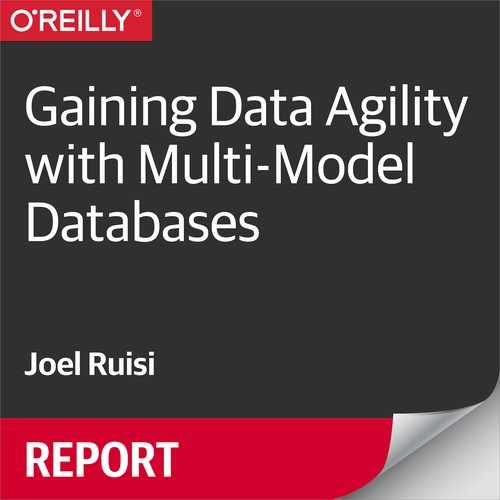Chapter 6. Summary
Most of the time, there is no single tool that will solve all our problems. What makes a system innovative is a combination of complementary tools that, as a whole, offer more value than if they were working alone. In this case, the multi-model database is one of those tools. As we have seen, the multi-model database is centered around this very concept that working together is always better than working alone. A multi-model approach encourages us to bring data in “as is.” We then can use the tools or set of tools that will best suit the task at hand. The multi-model database enables us to do this by reducing the amount of time and effort required to get multiple data models into a single system and reducing the amount of time and effort it takes to maintain it.
Moving Forward with Multi-Model
As we create innovative, data-centric solutions, it will help if we recognize the new normal that is multi-model. The majority of our industry is comfortable with relational technologies. We are all familiar with its shortcomings, but most of us have become experts in working around them. Relational technologies have proven that they can handle the velocity of data we throw at it, but it can no longer handle the variety of data required to drive innovative solutions.
Instead of thinking in terms of rows and columns, we can finally break out of the box and use a plethora of other ideas, strategies, and structures. Rather than spending our time coming up with workarounds to compensate for relational shortcomings, we can spend our time coming up with solutions that not only meet, but exceed, the needs of our consumers. Our new tool set includes documents, JSON, XML, key–value, graphs, as well as relational structures.
